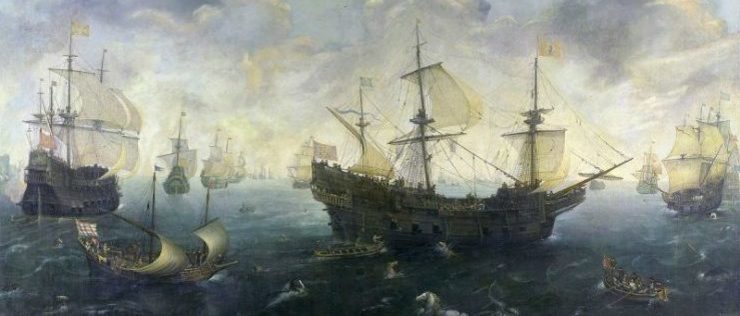Spanish Armada: The Enterprise of England
Posted on 28th March 2021
On the bitterly cold morning of 8 February 1587, Mary Stuart, Queen of Scots was led to the executioners block at Fotheringay Castle. As she removed the outer-garments she wore to protect her from the freezing air she remarked: "Never have I had such assistants to disrobe me, and never have I put my clothes before such company." She was then seen to smile faintly before turning to her executioner and granting him her forgiveness.
Kneeling before the block she gently placed her head upon it before stretching out her arms indicating for the executioner to strike. When he did, he missed her neck and struck instead the back of her head. Mary was heard to cry "Sweet Jesus" before he struck again but his second blow also failed to remove her head from her body and in the end he had to use a saw to do so.

By now in a state of some distress the executioner held up her severed head before those who had been invited to witness the event, but it slipped from his grasp and tumbled off the scaffold. Her bright auburn hair had in fact been a wig.
Although Mary had remained calm throughout her ordeal as if resigned to her fate and welcoming her martyrdom her execution had been a bloody and messy affair just as her cousin Queen Elizabeth had feared. She had only reluctantly signed the death warrant and had ordered that the execution be carried out as secretively as possible. Despite this the details soon leaked out and they outraged the Catholic world.
Mary Stuart had long been a thorn in the side of Elizabeth and there were many on the Continent and in England itself who considered her to be the legitimate Queen. So, by removing her only legitimate threat Elizabeth had at least secured her throne.
As early in Elizabeth's reign as 1570, Pope Pius V had issued a Papal Bull declaring Elizabeth to be the illegitimate daughter of a whore (Anne Boleyn) who had no right to the throne of England and that it was the duty of every Catholic to depose her and cause her harm. The rewards in heaven, he said, would be great for any Catholic who killed her and there were a great many conspirators with a design to do just that, and the replacement they had in mind was Mary, Queen of the Scots. As long as Mary lived, Elizabeth's Advisors had told her, she could never be safe.
Following the announcement of Mary's execution, a sense of relief swept the country, but it would be short-lived.
Catholic Europe would seek to avenge Mary’s execution and a little over a year after her death England was to face a far greater threat from the most powerful fleet the world had ever seen - the Spanish Armada.
The Enterprise of England as it was to become known had been urged on King Philip II of Spain for many years. He had previously been married to Elizabeth's half-sister Mary and had been for a short time King of England but in name only.
Marriage to a hysterical and increasingly paranoid Queen had not been easy and he did his best to remove himself from her presence wherever possible before leaving for Spain never to return.

When Elizabeth ascended to the throne upon Mary's death in 1558, Philip tried to woo her too but she was a Protestant as devoted to her religion as Philip was to his and she spurned his advances.
As a Protestant power England's relationship with Catholic Spain was always a fractious one and Elizabeth did little to alleviate the tension by her actions. Never able to resist the lure of great riches her foreign policy was cautious but also duplicitous and double-handed. She spoke of peace and co-operation while turning a blind eye to pirates and even commissioning English privateers to plunder Spanish Treasure Ships returning from the Caribbean.
In August 1585 she sent an English Army to support the Dutch rebels opposing Spanish occupation while in the midst of negotiations intended to bring the conflict to an end.
Her execution of Mary Stuart now revealed her to be not only a liar and a fraud who could not be trusted but also as a regicide and a cousin-killer who would stop at nothing to cling onto power.

Philip II was a physically unattractive man, pasty-faced, slight of stature and meticulous in his dress. He was also uncertain of himself and had a reputation for procrastination. By 1588 his health was failing, and he had come to mistrust his own judgement more than ever.
Always a pious man in old age he was taking Mass up to six times a day and had become ever more reliant upon Counsellors who were as cautious and indecisive as he was. Pope Pius V had earlier told him: "Your Majesty spends so long considering your undertakings that when the moment to perform them comes the moment has passed and the money has been spent."
Philip, a firm believer in his divine appointment likewise believed that his decisions were God's Will. The only problem was that he never knew what God's Will was and it says much about Elizabeth's behaviour that she had driven this ailing, cautious old man into decisive action. The final straw for Philip had been Sir Francis Drake's raid on the major Spanish port at Cadiz.
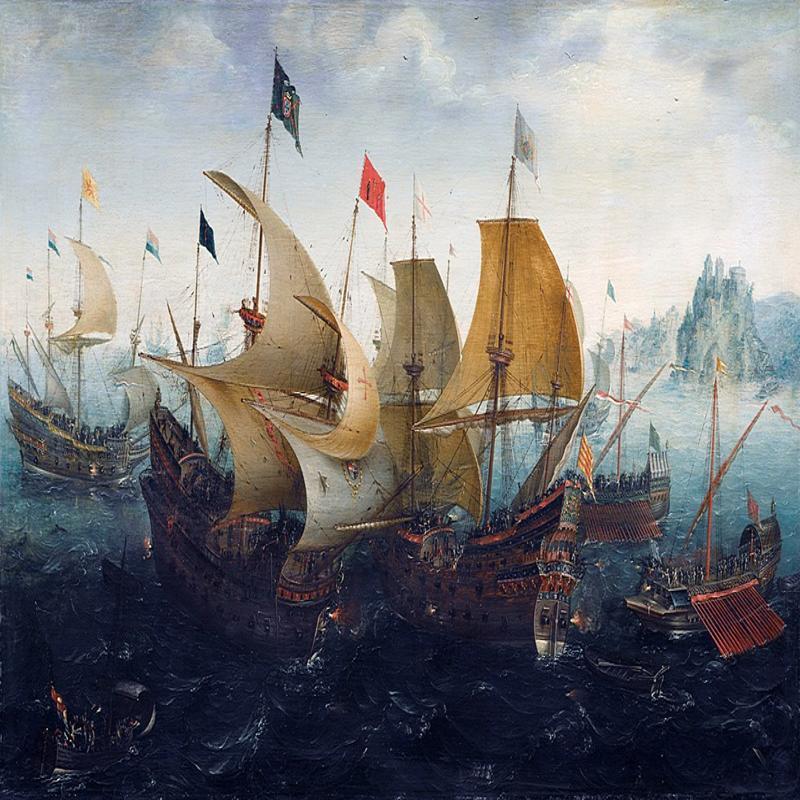
On 29 April 1587, Drake sailed his fleet into the harbour seized ships, sank others and bombarded the city but far from satisfied he then went onto plunder the city and set it alight.
The following month he did the same to Corunna and having sunk 37 ships and pillaged two cities he returned to England laden with treasure.
Elizabeth was delighted with this "Singeing of the King of Spain’s Beard" and even more so with the gold and silver that now filled her coffers, but she also feared the consequences.
Philip was both outraged and embarrassed, did his remit no longer run to even being able to protect his own shoreline? He demanded that Elizabeth punish Drake. When she refused, he ordered that the preparations for the Enterprise of England begin.
It was a laborious process and took over a year for the Armada that would subdue England and rid it of its heretical Queen to be built meanwhile the Enterprise of England suffered a further blow when Spain's leading Admiral and the man assigned to lead it the Marquess de Santa Cruz, died. The man Philip chose to succeed him was Alonso Perez de Guzman the Duke of Medina Sidonia.
He was extremely wealthy, one of the biggest landowners in the country and the Captain of Andalucia. He was also an experienced soldier who had defended the centre of Cadiz against Drake and was considered to be the ablest administrator in Spain, but he had never been to sea. When he heard of his appointment, he was physically ill and begged Philip to remove him from his command but the King refused.
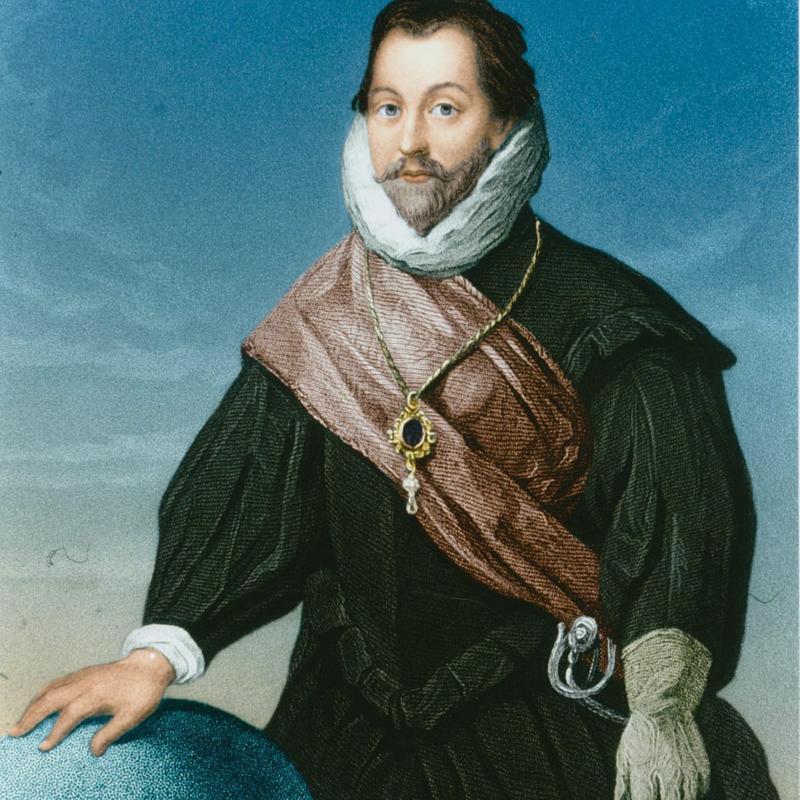
England also now had to look to its defence and to one man in particular, Sir Francis Drake, the great Elizabethan seafaring hero.
Francis Drake had been born in Tavistock, Devon in 1544, but was raised in Kent. He had begun his career at sea as a slave trader but soon found that there was more glory and more money to be made in piracy. In 1572 he sailed to the Caribbean where he captured the Spanish trading post of Nombre de Dios on the Isthmus of Panama and proceeded to plunder the Spanish Treasure Ships as they docked in port.Returning to England with his ships laden with gold he very quickly became the darling of the Queen, if not her Court and her Council.
In 1577, Elizabeth commissioned him to steal from the Spanish on behalf of the English Crown and he did so with alacrity.
AArriving back in London in September 1580 having been the first Englishman to circumnavigate the globe he was a national hero. Crowds flocked to see him, and people even tore at his clothes. Seven months later a delighted Queen knighted him aboard his flagship the Golden Hind.
Drake was both hated and feared by the Spanish who put a price of 20,000 ducats on his head or some £4 million in today’s money.
He was a course, roughly-hewn man of little background but he soon became familiar with Court etiquette even if he was little liked and even less trusted. But he was popular with the people and more importantly with the Queen and it was in him that everyone now placed their trust.

Arriving back in London in September 1580 having been the first Englishman to circumnavigate the globe he was a national hero. Crowds flocked to see him, and people even tore at his clothes. Seven months later a delighted Queen knighted him aboard his flagship the Golden Hind.
Drake was both hated and feared by the Spanish who put a price of 20,000 ducats on his head or some £4 million in today’s money.
He was a course, roughly-hewn man of little background but he soon became familiar with Court etiquette even if he was little liked and even less trusted. But he was popular with the people and more importantly with the Queen and it was in him that everyone now placed their trust.

Poor weather and the tides ensured that the Armada wasn't seen off the coast of England until July. Sir Francis Drake, who though nominally second-in-command to Lord John Howard of Effingham was still the man to whom everyone looked for salvation exuded confidence and when he was informed by a panicky courtier whilst playing bowls at Plymouth Hoe that the Armada had been sighted sailing off the coast of Devon, he remained calm and replied that there was still time to finish his game before he finished off the Spaniards. The story might have been apocryphal, but Drake was correct. He knew at that time the tides would have been against them.
The danger remained very real however, and the news that the Armada had been sighted was relayed to the people of England and back to London via a series of beacons that were lit all along the south-coast - the so-called "Fires over England."
Howard was eager to attack the Armada at the first opportunity and on 19 July with 55 ships he intercepted them in the Channel.
In the ensuing fight two Spanish ships collided, the Rosario and the San Salvador. The San Salvador sank, and the Rosario was abandoned. As night fell Drake’s impulse to plunder returned and he set off to lay claim to the stranded Rosario. In doing so he snuffed out the lantern that was guiding the rest of the fleet which became scattered as a result.
Drake was delighted for on board the Rosario was 50,000 gold ducats and an abundance of gunpowder and supplies. Howard was furious that the disarray in the English fleet had allowed the Armada to slip away. Drake’s actions had provided Medina Sidonia with both a head start and an opportunity. If he could occupy the Isle of Wight, then it would not only provide him with a safe harbour but it could also serve as a base from which the Duke of Parma could invade England.
Lord Howard aware of this and desperate to prevent it set off in pursuit and with faster ships and the wind in his favour he caught up with the Armada again on the 23 July engaging them at Edystone and off Portland Bill but was unable to inflict any serious damage.
The opportunity still remained for Medina Sidonia to occupy the Isle of Wight, but these were treacherous waters, and the Solent was protected by the Owers Sandbank. Fearing that his ships would become stranded and not trusting his charts Medinia Sidonia again erred on the side of caution and sailed on to Dunkirk where the Duke of Parma’s Army was massing for the invasion.

The Armada's tightly packed crescent formation may have made it slow and ponderous, but it also made it almost impenetrable to attack.
The English could swarm around the Armada but they did not have the firepower to do it much harm and the only way they could get in among the Spanish ships was to engage them at very close range, but this would play into Spanish hands as their preferred tactic was to use the many soldiers they had to board enemy ships. The English could not afford to take this chance. They had somehow to break up the formation.
The Duke of Medina Sidonia, hampered by the weather and the unpredictable tides of the English Channel had been unable to rendezvous with the forces of the Duke of Parma as had been planned. In the meantime, he anchored his ships just off the coast of Calais aware of what the English might try to do.
With the Armada at anchor and all in one place the English he believed would attempt to break up the formation with fire-ships. He held a special meeting with his Captains where he warned them of what to expect and emphasised the necessity of not panicking and ordered that under no circumstances must they break formation and head out to open sea. His patrol vessels, he confidently predicted, would deal with any menace posed by the fire-ships.
Medina Sidonia may not have had the respect of his Captain’s but his tendency to hang those who disagreed with him guaranteed their compliance, though many feared that he had just made them an easy target.
On the night of 27 July 1588, Drake organised the dispatch of 8 fire-ships crammed with brimstone and pitch. The ships were manned by volunteers and their guns had been primed to fire simultaneously. One of his men, John Young, was responsible for guiding the ships to their target and ensuring that they were all set alight.

The Spanish sailors watched transfixed and in some trepidation as the 8 blazing hulks moved ever closer. They were astonished at the number and the size of the ships. The rumour soon began to spread that they were Hell-burners, ships crammed with gunpowder and primed to explode. Hell-burners had recently been used at the Siege of Antwerp and the massive explosions that had occurred had taken the lives of 2,000 Spanish sailors.
As the fire-ships began to float harmlessly towards the shore having only set one Spanish ship alight panic did indeed set in. Fearing they were about to explode one Captain after another upped-anchor and set sail for the open sea. The Duke of Medina Sidonia frantically signalled his Captains to remain where they were, but his orders were ignored.
With the formation broken the Spanish were now vulnerable to attack and the English wasted no time in doing just that. In the ensuing Battle of Gravelines four Spanish Galleons stood between the English Fleet and the destruction of the Spanish Armada.
For hours they held the English at bay. Three of them were sunk and 600 Spanish sailors drowned but their defiance had allowed the Spanish time to regroup and make their escape.
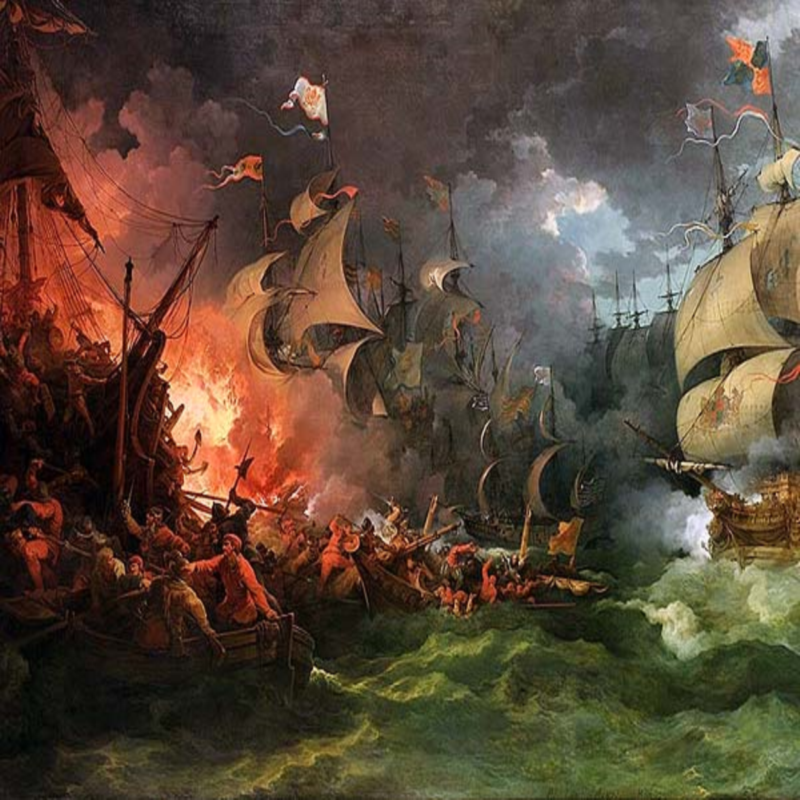
The Battle of Gravelines was to leave the Armada 12 ships short, either sunk or dead in the water but it was still largely intact, and the worsening weather made any further pursuit impossible. Medina Sidonia would later say that: "The Armada was saved by the weather, by God's mercy." He would soon have reason to change his mind.
The English had blocked off the route through the Channel and the only way back to Spain was along the east-coast of England, around the north-coast of Scotland and into the Irish Sea.
With little water, scarce food, and the dead, dying and wounded still on board it wasn't long before disease began to break out in the cramped conditions and men began to die in their hundreds. Others driven insane by thirst and starvation committed suicide.
As the Armada approached the stretch of water that separated the Hebrides from mainland Scotland, they encountered the worst storms in living memory. Battered by the waves and forced onto the rocks by the winds the Armada was destroyed.
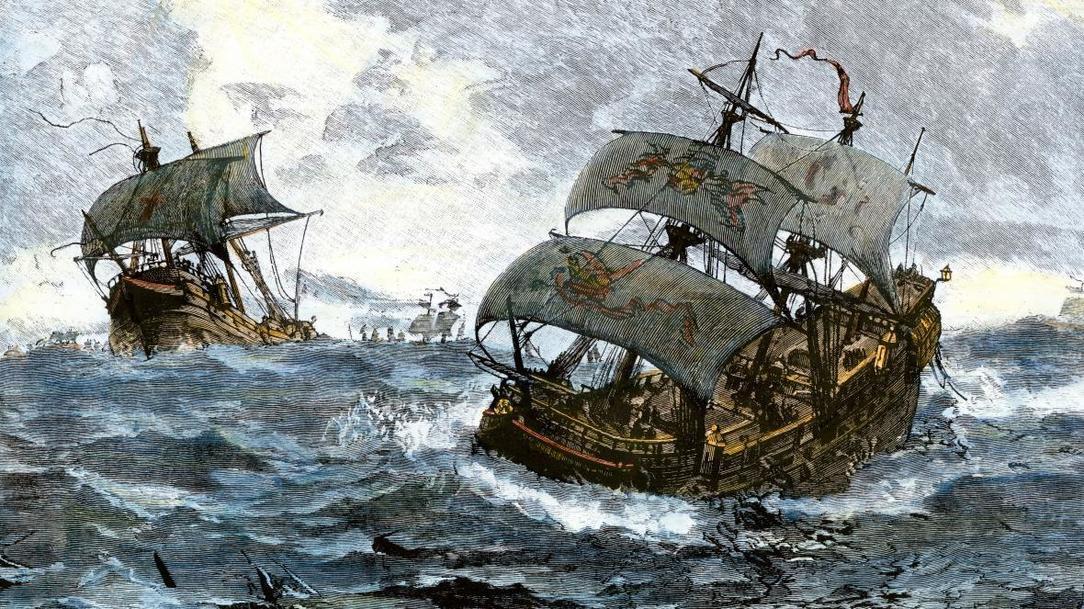
IIn their desperation some Captains tried to beach their ships on the coast of Ireland and those who managed to do so had expected a warm welcome from their fellow Catholics. Instead, they were invariably attacked, robbed and murdered by the Irish.
What was left of the Spanish Armada limped home over the next few weeks a mere skeleton of its previous self. Of the 151 ships that had sailed from Lisbon three months earlier 15 had been lost to enemy action, 10 had been abandoned, 51 had been wrecked off the coast of northern Britain and 20,000 Spanish sailors had been killed.
By comparison the English had lost no ships and fewer than 100 men had been killed. Though not allowed to disembark from their ships for fear that the Armada might return (and because Elizabeth was disinclined to pay them) a further 6,000 were later to die of disease.
The English were triumphant, though it was due as much to a Protestant Wind as it was the genius of Howard, Drake, Hawkins, Frobisher and others.
Now back in Spain the Duke of Medina Sidonia, much to his relief no doubt was removed from command whilst Philip distraught begged forgiveness from God for acting against His Will as expressed in His destruction of the Armada.
In England the fear of invasion remained however, the Duke of Parma and his formidable army were still stationed in the Netherlands just a few miles away across the North Sea, and the Spanish had certainly not given up any thought of trying again.
The prospect of more fighting still to come now produced one of the great orations in English history.

On 8 August 1588, in an event organised by her General and favourite Robert Dudley, Earl of Leicester, Queen Elizabeth inspected her army encamped at Tilbury. Wearing a silver breastplate over her white velvet dress and riding a dappled grey mare she addressed her troops with passion and no little emotion:
"My loving people, we have been persuaded by some, careful of our safety, to take heed of how we commit ourselves to armed multitudes, for fear of treachery; but I assure you that I do not desire to distrust my faithful and loving people. Let tyrants fear. I have always so behaved myself that, under God, I have placed my chiefest strength and safeguard in the loyal hearts and goodwill of my subjects; and therefore I am come amongst you, as you see at this time, not for my recreation and disport, but being resolved in the midst and heat of the battle to live and die amongst you all, to lay down for my God, and for my Kingdom, and my people, my honour and my blood, even in the dust.
I know I have the body of a weak and feeble woman, but I have the heart and stomach of a King, and a King of England to, and think foul scorn that Parma or Spain, or any Prince of Europe, should dare to invade the borders of my realm; to which rather than any dishonour should grow by me, I myself will take up arms, I myself will be your General, Judge, and Rewarder of every one of your virtues in the field.
I know already for your forwardness you have deserved rewards and crowns; and we do assure you in the word of a Prince, they shall be duly paid you."

They were not, of course. Elizabeth, one of the most rapacious and thrifty Monarchs in English history had only reluctantly agreed to pay for the ships required to defend her realm from Spanish invasion. Any gold or jewels that found their way into her hands she was determined to keep for, herself. Even the sailors who had fought against the Armada received nothing more than their normal pay. If they were lucky, they might receive the fare back to their homes.
So embarrassed was John Hawkins by the parsimony of his Queen that he rewarded his men out of his own pocket.
Despite Elizabeth's myriad faults she had been an inspirational figure at a time of great peril. With God on their side and the wind in their favour, England had been saved and she was forever more the Virgin Gloriana.
The Fires over England were lit once again - but this time in triumphant celebration.
Tagged as: Tudor & Stuart, War
Share this post:





